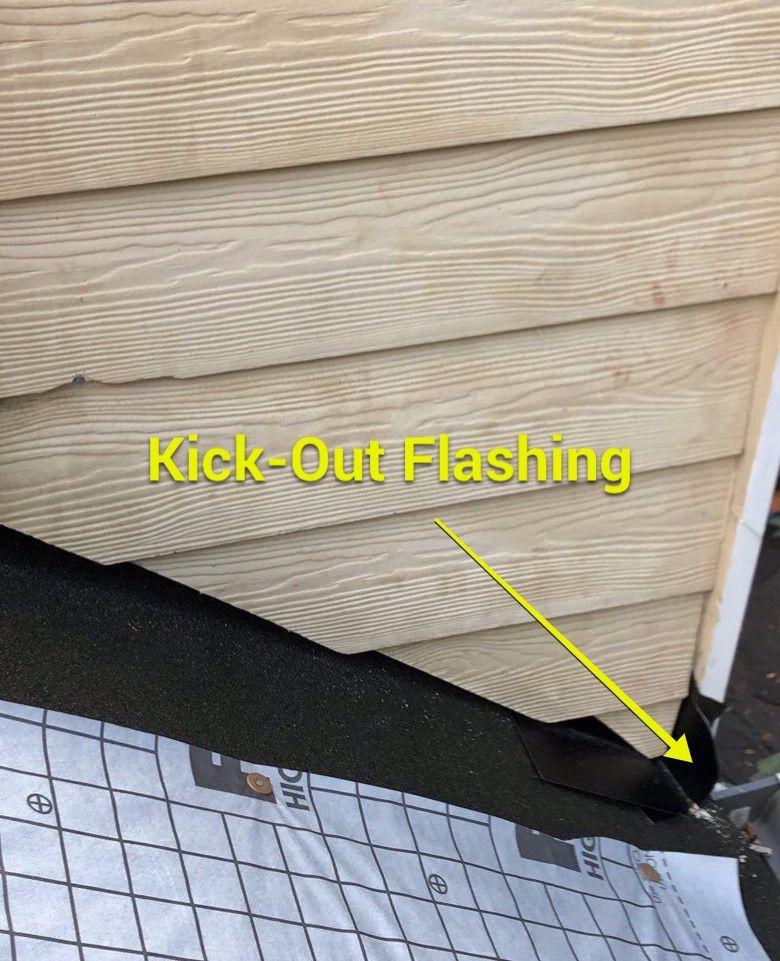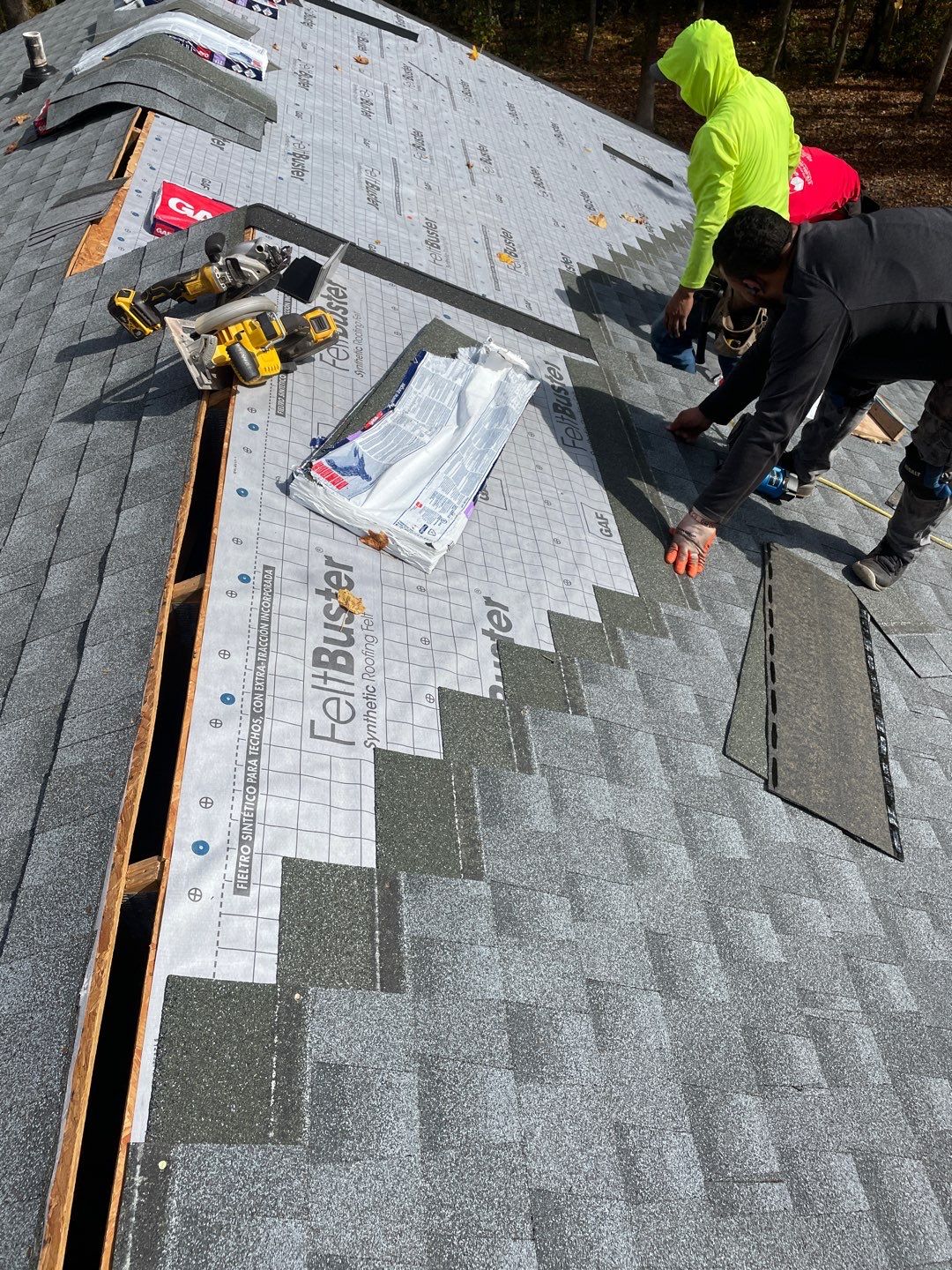
When Does a Roof in Woodstock, Georgia, Need to Be Replaced?
How do you know it’s time to replace the roof of your Woodstock home? After all, not every roof leak means it’s time to replace your roof. In this blog, I’ll review the most common signs to look for when trying to evaluate the condition of your roof and things to consider as you think about roof repairs vs. deciding it’s time to call a roofing company for a replacement quote.
Replacing a Roof in Woodstock
Our experience with roof replacements and inspections has almost exclusively centered on homes in North Ga’s wet forest, from the tree-lined avenues of Atlanta neighborhoods like Grant Park to the northern suburbs of Alpharetta and Woodstock. I say this only because signs and issues we look out for might differ in other parts of the country where constant moisture and leaf debris are less critical.
In an ideal world, you give little to no thought to the roof that covers your head. But occasionally, you come home after a long week only to look up and see what appears to be water spots on your ceiling. Suddenly, you have to decide if you can reliably repair the roof you have or if you’re looking at buying a new roofing system. Step 1: Don’t panic. If you catch most leaks within a few days of showing up on your ceiling, you can save many interior restoration charges. If you live in Woodstock and notice a roof leak, call us, and we can typically get someone out within 24 hours to take a look.
It is nearly impossible to make a well-informed decision on a new roof without thoroughly inspecting the flashing details and rooftop conditions. You can often spot a lot from a ground walk around and even more if you’re willing to take a look in the attic.
A List of Things a Homeowner Can Look Out for by Doing a Walk Around at Ground Level.
- Brown Stains on Your Ceiling
- Moss on Roof
- Sagging Roof
- Gutter Pulling Off The House
- Missing Shingles
- Missing Kick-Out Flashing
- Siding Damage at Roof-to-Wall Transitions (Especially Around the Chimney)
- Large Amounts of Granules on Sidewalks and Driveways.
- High Nailed Shingles
- Curling Shingles
- Attic Inspection
1. Brown Stains on Your Ceiling
Most homeowners notice roof leaks when they spot brown stains on the ceiling. Unfortunately, most of us don’t walk around the house with our heads up, looking at the ceiling in detail. If you spot a water leak soon after it starts, you can typically repair the roof using the existing plywood that the shingles are attached to. But after a while, the plywood decking the roofing is attached to starts to rot, making it impossible to install new roofing without first replacing the wood underneath, often adding between $500.00-$1500.00 to roof repairs.
I recommend walking around your house at least once a season to check the ceiling for brown spots. I recall getting a call from a homeowner off Arbor Hill Rd in Woodstock who reached out to us after the ceiling of a guest bedroom caved in. The homeowner didn’t use the room and hadn’t been in there in over a year so was unaware of the ongoing leak issue.
If you see a brown spot but aren’t sure if it was there previously, it helps to take a few photos and monitor the area during the next rain.
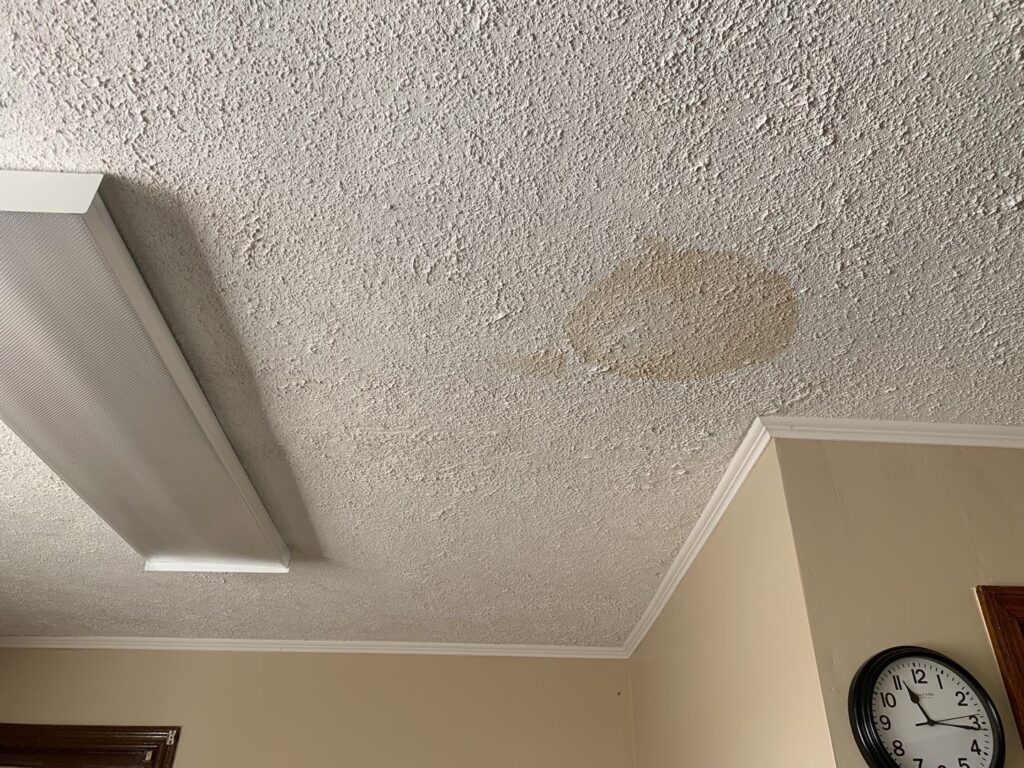
2. Moss on Roof
A common issue on roofs in north Georgia is staining caused by algae. Shaded areas of the roof and north-facing slopes of asphalt shingle roofs will often start to turn much darker, and occasionally appears to streak. While algae can make roofs appear old, I can’t personally say they cause real damage. Slopes with algae do not tend to age or damage more than slopes without them.
Moss, on the other hand, is entirely different. If you have significant moss buildup on your roof, your home’s roof may retain a lot of moisture. Keeping leaves and tree limbs from piling up on your roof will help prevent the build up of biological matter that allows the moss to grow. Seeing moss on your roof doesn’t necessarily mean you need a new roof immediately, but it is a sign you should have a roof inspection performed.
3. Sagging Roof
I want to say many homes have sagging sections in their roofs, including brand new homes built on 92 to homes in Bradshaw Farms and Towne Lake, and their roofs are fine (mostly). A sagging roof can be due to a roof leak that has caused the plywood underneath to rot, which in turn causes the roofing above to sag because it’s not supported. But sagging roofs are just as often due to underlying framing issues such as lumber bowing or outside walls that have settled slightly.
When looking for sagging problems that point to a possible roof leak, check out areas where the roof meets the siding, below any roofing penetrations such as pipes and skylights, and under any satellite mounts. All of these areas are prone to leaking.
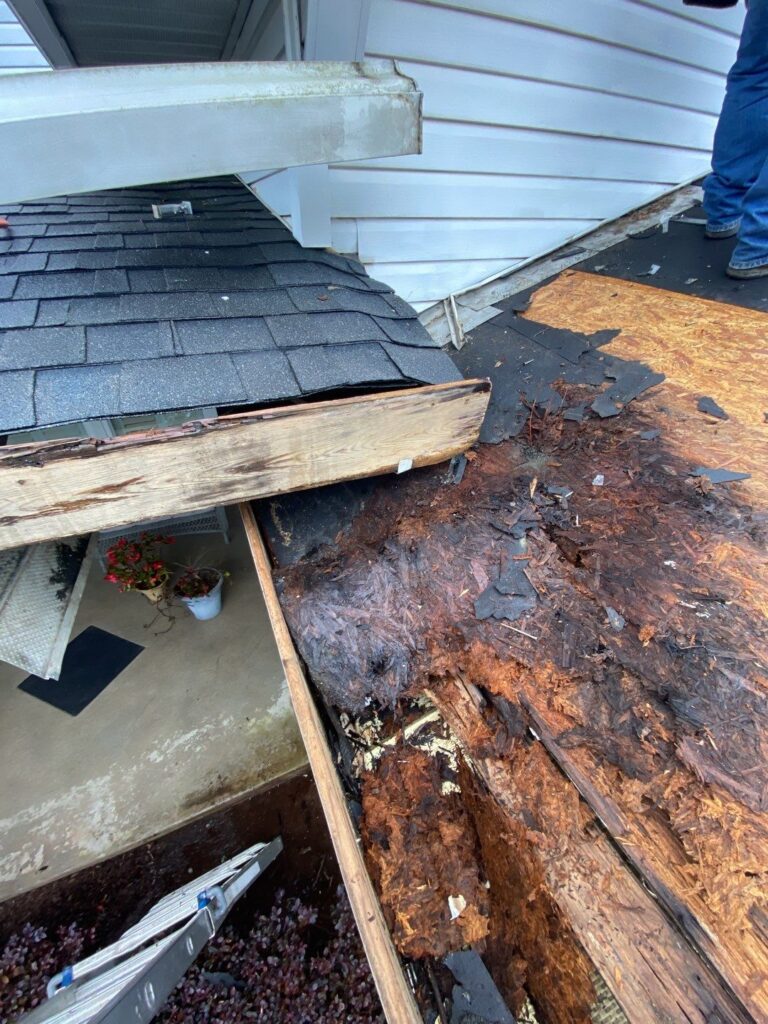
4. Gutter Pulling Off The House
Though gutters have little to do with your roof, you can often spot roofing issues above areas where gutters start pulling away from the fascia. Gutters tend to pull away from fascia when the wood they are attached to starts to rot.
Outside of unsealed mitered corners on gutters, roof leaks around the roof’s perimeter are the primary cause of rotted fascia. As the wood rots, it releases the gutter spikes or screws, causing the gutter to either pull away from the house or fall off altogether. This problem often shows up in fall as the gutters fill with leaves, and the rotting fascia can no longer hold the heavy gutters.
5. Missing Shingles
If you are missing shingles on your roof, there is a good chance it’s at least time to consider calling a roofing repair company in Woodstock. For example, suppose your roof is less than eight years old, and you only miss a few shingles. In that case, you can likely repair your roof, but somewhere around the eight-year mark on 3 Tab shingle roofs and the 10-12 year mark on architectural shingles, the roofing starts to become too stiff and brittle to repair quickly.
Of course, timelines vary depending on how well-ventilated the roof is and how much direct sun your home receives, but the older the roof, the more likely missing shingles mean it’s time to get a roof quote.
6. Missing Kick-Out Flashing
The majority of brand new homes have missing kick-out flashings, so a missing flashing does not mean you need a new roof, but it does mean the crew who put the roof on doesn’t understand flashing details, and your home is most likely going to suffer damage if you don’t address the issue.
On older roofs, a missing kick-out flashing can decide whether you repair the roof and get a few more years out of it or if you go ahead and replace the roof and address the missing flashing details in hopes of saving yourself thousands in repairs later.
7. Siding Damage at Roof-to-Wall Transitions (Especially Around the Chimney)
It seems counterintuitive to inspect siding to determine the condition of your roof, but siding rot at roof-to-wall transitions (wherever a roof meets a wall) can often point to the state of the roof below. The issue with rotting siding at roof-to-wall transitions is the roof flashing often only goes up the wall a few inches. If the siding rots higher than the roof flashing, it can let water into the exterior walls.
Also, repairing the siding above an older roof often leads to extensive damage to the shingles because guys have to stand on the roof to fix the siding. Newer shingles can handle the traffic better but shingles older than ten years often get marred and damaged. If siding is repaired above an older roof, it often makes sense to do the siding and roof together. This allows us to install the flashing details for roof correctly up the wall to meet new building codes, which require the roof flashing to extend up the wall 4”.
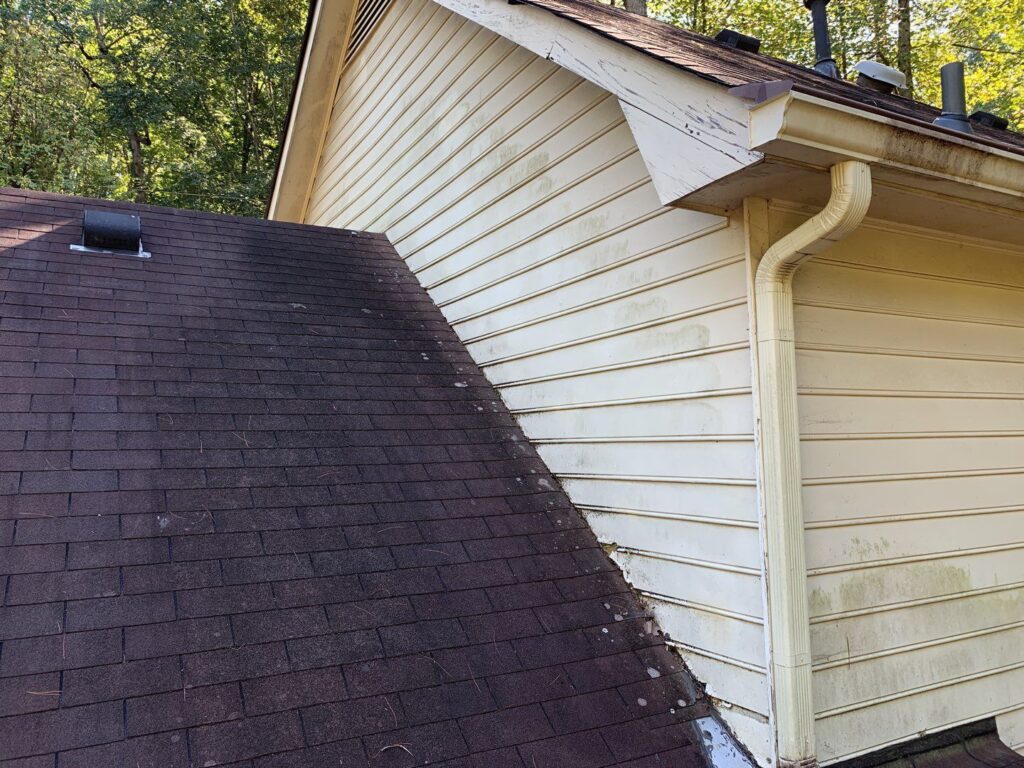
8. Large Amounts of Granules on Sidewalks and Driveways.
Asphalt shingles are sheets of fiberglass mats that are coated with asphalt. On top of the asphalt, there are little rocks known as granules that protect the fiberglass mat from ultraviolet radiation, which can break the mat down. As shingles age, the asphalt becomes brittle and the granules can start to fall off shingles as rain washes over them.
Right after shingles are installed, there will be a large number of granules that wash out of the gutter downspouts, but after that initial washout, it should keep the shingles from releasing granules. As you walk around the exterior of your home, check the gutter downspouts if they are full of little rocks its an excellent idea to have a roofing company take a closer look at the condition of your roof.
9. High Nailed Shingles
High-nailed shingles are an installation issue that often appears on architectural shingle roofs with steep pitches. Architectural shingles are also known as laminated shingles because they are two layers of asphalt shingles that are laminated. This lamination is what gives the shingles some of their dimensional looks.
The shingles have a small strip called the nail line where you can nail them (the strip is where the two sections of shingles overlap each other). If the nail is placed higher than the strip, then the bottom section of the shingle is held in place by the adhesive that holds the two strips of shingles together. As the shingles heat in the sun, the bottom layer glued in place will start to delaminate and slide down. Unfortunately, one high-nailed shingle is often a sign of many high-nailed shingles because either one installer (or sometimes the entire crew) didn’t know the consequences of missing the nail strip.
This problem typically shows up after a few years. I suggest repairing the roof the few or two times you notice it and hoping that the installer error was an exception. If the problem shows up a few more times, it’s a good idea to start budgeting for a new roof because as the roof ages, the issue starts showing up more and more as the adhesive fails.
10. Curling Shingles
A cupped shingle is most familiar with 3-tab style shingles. When the shingles get too hot, they can start to curl up as the edges; I assume because the asphalt and mat are contracting. As the shingles curl, they are stiff and begin to pull away from the adhesive that holds them to the shingle below, making wind damage much more likely.
When inspecting your roof from the ground it’s best to check shingles for curling when the sun is at the right angle to cast long shadows. As the edges curl, they will stick up and cast shadows on the shingles below, making them easier to spot.
11. Attic Inspection
If you have easy access to your attic, I suggest poking your head in occasionally to look. You can often spot wet spots on roof decking (wood the roofing is attached to) before it soaks through and damages the drywall. Also, pay careful attention to weak roofing points like pedestrians and valleys. Finally, be cautious in your attic; one slip can seriously hurt you and cause ceiling damage below.
The above are typical roofing issues you may see while doing a ground-level walk around your home to help you determine the actual condition of your roof. For a detailed inspection checking out your entire roofing system, contact a local roofing company, ideally one that offers photo reports with their inspections.
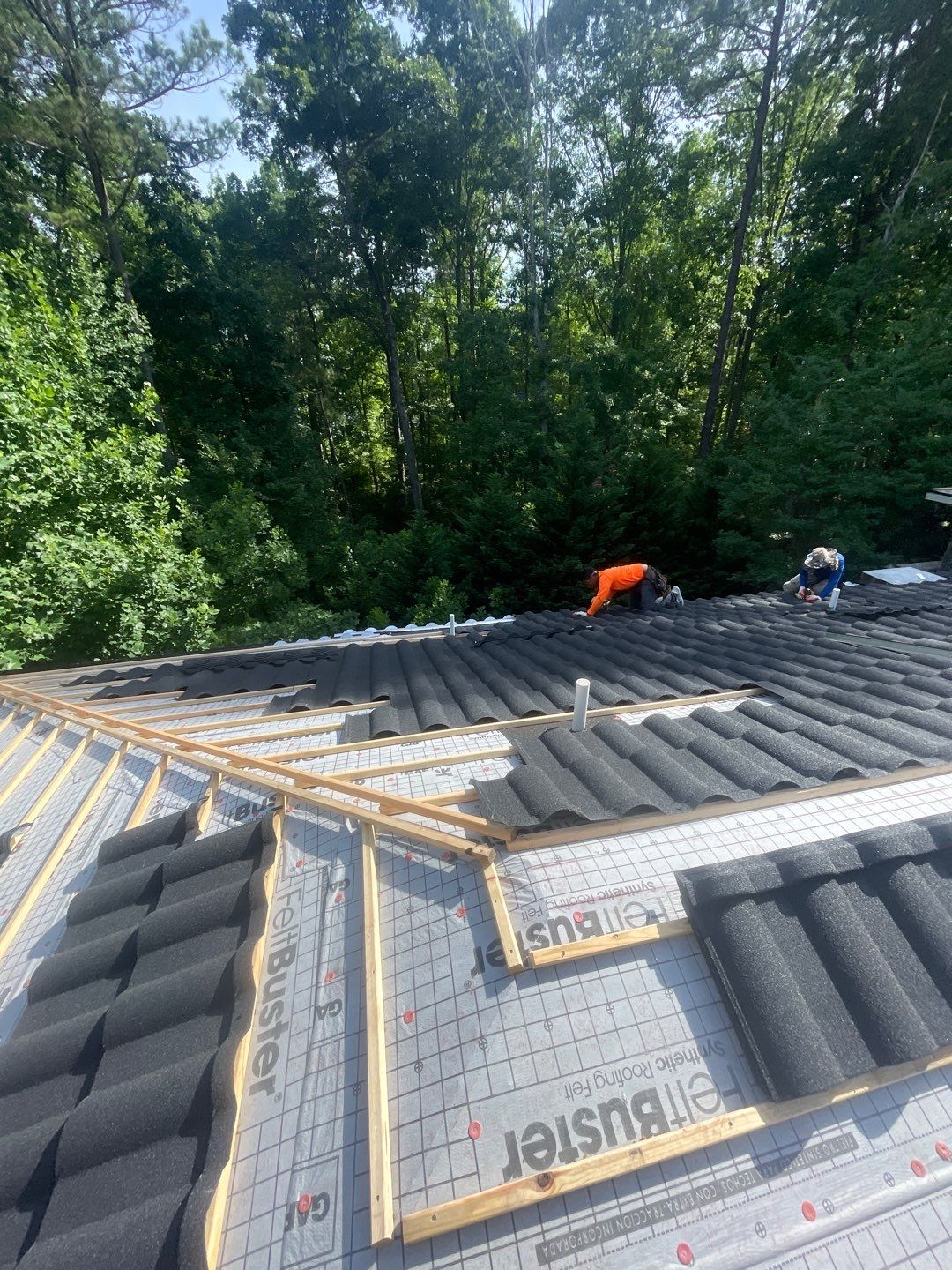
Word of Caution For Your Woodstock Roof
A lot of roofing companies only inspect roofs for signs of storm damage in hopes of getting an insurance company to pay. Often time free roof inspections from companies that primarily work with insurance companies are incomplete and lean heavily in favor of filing a claim for a complete new roof even when their is minimal damage and the roof has years of useful life left. Ask for a detailed photo report of your roof inspection that shows the actual issues you are facing.
A List Of Things The Professional Woodstock Roof Inspection Should Include
- Condition of the roof decking.
- Proper ventilation at both ridge and eaves.
- Discontinued shingles. Generally, you can not repair discontinued shingles without voiding manufacturers’ warranties.
- A guess as to the approximate age of the roof.
- Kickout flashing
- Step flashing
- Penetration flashing: Pipe flashings.
- Valley flashing
- Drip edge
- Exposed nails
- Condition of shingles
- Low nailed shingles
- Condition of siding above roof lines.
If you live inside our service area, which covers most of north Georgia from the heart of Atlanta up to Woodstock and Alpharetta, please don’t hesitate to call us for a detailed inspection of your entire exterior. We provide a link to all the photos we take, a video review of any issues, and exact quotes for roof replacements and roof leak repairs.
